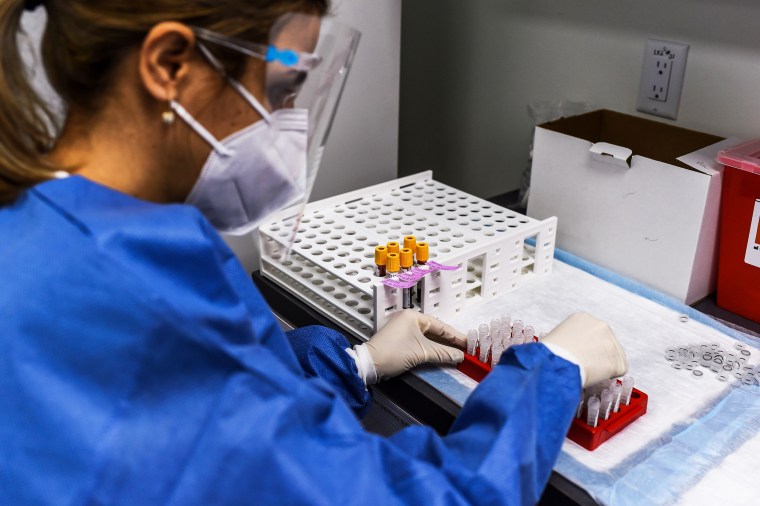Latino and Black workers remain underrepresented in the science, technology, engineering and math (STEM) workforce compared with their share of all workers. But a Pew Research Center report published Thursday found that the gap in STEM workforce representation is especially large for Hispanic adults.
While Latinos make up 17 percent of total employment across all occupations, they represent only 8 percent of all STEM workers. Their share of all STEM workers is up 1 percent since 2016, in line with their growth in the overall workforce.
At the same time, Black people comprise 11 percent of all employed adults, compared with 9 percent of those in STEM occupations. Their share of all STEM workers remains unchanged since 2016. In some STEM job clusters, such as engineering and architecture jobs, that share is as low as 5 percent.
White workers constitute two-thirds (67 percent) of workers in STEM occupations. That's more than their 63 percent share of workers across all occupations. They're also particularly overrepresented among engineers and architects. Asian people are 13 percent of those employed in STEM jobs, overrepresented compared with their 6 percent share of total employment across all occupations.
These findings come amid longstanding efforts to increase diversity across these fields ahead of an anticipated growth in STEM jobs, which are expected to outpace that of non-STEM jobs in the coming years, according to report authors Richard Fry, Brian Kennedy, and Cary Funk.
Researchers also found that women make up a large majority of all workers in health-related jobs, but remain underrepresented in specific fields such as the physical sciences, computing and engineering.
Women make up 50 percent of those employed in STEM jobs, slightly higher than their share in the overall workforce (47 percent), and they are heavily overrepresented in health-related jobs (74 percent), the largest STEM occupational cluster.
However, women continue to be vastly underrepresented in the ranks of engineers and architects (15 percent) and account for 25 percent of those working computer occupations. Women also make up 40 percent of the nation’s physical scientists, 48 percent of life scientists, and 47 percent of them are in mathematical occupations.
"The long-term outlook for diversity in the STEM workforce is closely tied to representation in the STEM educational system, particularly across the nation’s colleges and universities," Fry, Kennedy, and Funk wrote.
Underrepresented in college, advanced STEM degrees
But current trends in STEM degree attainment appear unlikely to substantially narrow these gaps, according to the report, which is based on an analysis of federal employment and education data.
Black and Latino adults are underrepresented among STEM college graduates compared with their share in the population, and a smaller share are earning degrees in a STEM field than in other degree programs.
Black students earned 7 percent of STEM bachelor’s degrees as of 2018, the most recent year available, below their share of all bachelor’s degrees (10 percent) or their share of the adult population (12 percent).
The share of Latino college graduates with a STEM degree remains at 12 percent, lower than that for all college graduates (15 percent) in 2018.
Black and Latino adults are also underrepresented among those earning advanced degrees in STEM, especially among those earning Ph.D. or other research doctorates. Representation of Black and Latino adults is lowest in math, physical sciences and engineering degree fields, according to the report.
Follow NBC Latino on Facebook, Twitter and Instagram.

